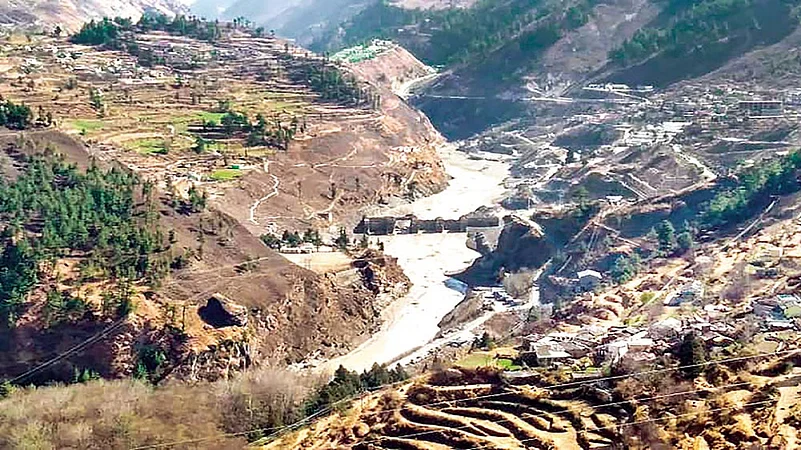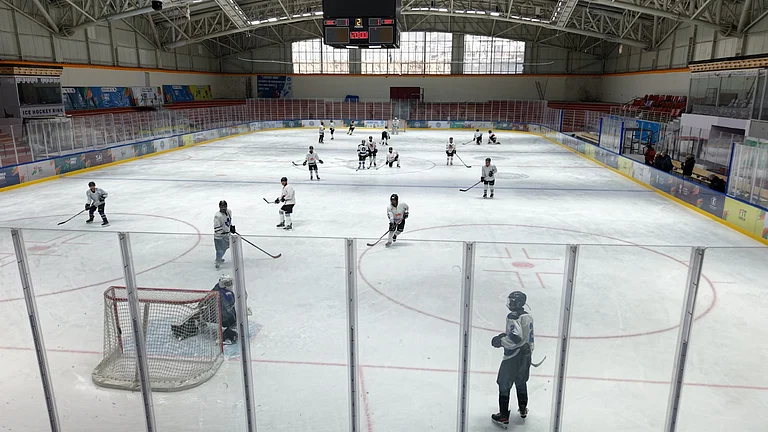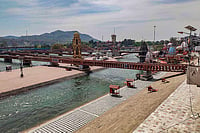Dev Bhoomi, they call Uttarakhand. Going by the past 30 years, the gods must be angry. The 1991 Uttarakashi earthquake cost 768 human lives. The 1998 Malpa landslide left 221 dead. The number of casualties in the 1999 Chamoli earthquake was 103. The 2013 Kedarnath floods left 5,700 dead. Many smaller disasters punctuated these.
All these disasters relate to earthquakes or water activity. Often both. “The Himalayas are very fragile, crumbly and young. They are not the Alps. They are prone to erosion, landslides and seismic activity. The terrain means these things will happen, and climate change may worsen it,” says Rajesh Thadani, a PhD in Forest Ecophysiology from Yale. “If the administration calls it a natural calamity, that’s just lack of foresight. It is like sitting under a rock which you know will fall, and when it falls you say there is nothing we could have done.”
Yet, we seem to go from disaster to disaster without any planning or foresight. A basic step after a calamity is to set up a body to find facts. That way one can find ways to prevent a future nightmare. This wasn’t done even for the 2013 Uttarakhand floods, despite their scale. The sole report from the National Institute of Disaster Management (NIDM) talks about the rain. It focuses more on the rescue efforts rather than the causes. We’re more interested in the cure than the prevention. It is no surprise then that we could not predict the disaster in Chamoli last week. Throwing up our hands in despair when a calamity hits is not a strategy.

Devastation caused by the 2013 Kedarnath deluge.
In a judgment in August 2013, Supreme Court Justice K.S. Radhakrishnan said, “The cumulative impact of those project components like dams, tunnels, blasting, power-house, muck disposal, mining, deforestation, etc. on eco-system, is yet to be scientifically examined.” The judgment said that all projects in Uttarakhand be put on hold. He further expressed concern at the “mushrooming of large number of hydroelectric projects”.
Based on that ruling, in April 2014, the expert body headed by Ravi Chopra recommended that 23 hydel projects be halted. Further, they recommended a Strategic Environmental Assessment (SEA) of other major river basins. It also required that the cascade effect of dams built close together be studied. Eight such dams were hit in 2013, which made the impact of the flooding worse. “Each time such a structure breaks, the river acquires greater power and debris,” says Himanshu Takkar, an authority on the subject who runs the South Asia Network on Dams, Rivers and People (SANDRP).
Yet, today we’re building dams bumper-to-bumper. The Alaknanda river in Uttarakhand is 195 km long, and currently has 14 dams already built or under construction. That means one dam every 14 km. To top that, another 23 dams are planned on Alaknanda and its tributaries. The now-destroyed Rishiganga power plant was one such.

Wreckage of the recent Chamoli glacier burst.
In a seismic zone such projects are even more dicey. Uttarakhand is in Zone 5, the most risky earthquake zone of the country. Yet, the government is hellbent on large invasive infrastructure projects in Uttarakhand, like the Char Dham road and rail project. It means largescale blasting and excavation. All in a fragile and landslide-prone set of mountains. “In many areas the road is being cut directly into the side of the mountain, and all the mud and rocks are going into the river below,” says Hridayesh Joshi, author of Rage of the River which was about the 2013 disaster.
“An environmental assessment, public hearing and appraisal is required for any highway more than 100 km in length,” says Takkar “So what they did was break up the Char Dham project into many smaller projects of 20-30 km and went ahead without any clearances or public consultation. And when the petition went to the Supreme Court, it was a fait accompli.”
The project cost of Char Dham is Rs 12,000 crore for the road project and Rs 43,000+ crore for the rail project. A total of over Rs 55,000 crores will be spent on digging tunnels, blasting mountainsides and clogging rivers. To put that in perspective, although it has a female literacy rate of only 69 per cent, Uttarakhand spent only Rs 7,487 crore on education in 2018-19. Somewhere, our priorities seem off. We aren’t just sitting under a rock hoping it won’t fall. We’re actually piling rocks above an unsuspecting population. It seems we don’t care whether they fall or not. When they do, we’ll throw up our hands again, tweet about how the whole nation stands with the state, and carry on.
It’s just a matter of time before the next disaster. And we’ll be surprised yet again.
(Views are personal)
The author is a resident of village Satkhol in Uttarakhand, where he runs the Himalayan Writing Retreat www.himalayanwritingretreat.com






















